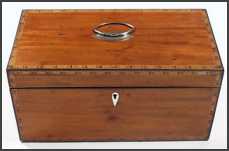 |
The top of the caddy has a centrally placed Sheffield plate
carrying handle. |
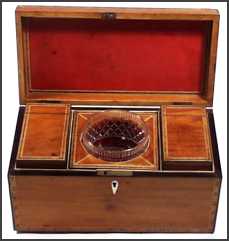 |
The caddy is in very good original condition and has a working lock
with key. It has not been refinished.
The inside of the lid is lined with paper edged with inlay lines and
a cross binding of kingwood. This is the same banding used around the lids
of the canisters
The central compartment has the original heavy hand cut and blown crystal
mixing bowl (see below). The bowl sits in a specially made recess, which
is faced with mitred and book matched mahogany banded with inlay. The well
is lined with red velvet. |
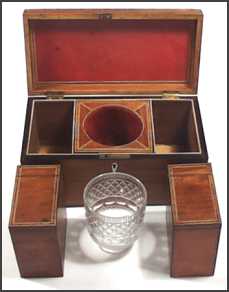 |
The facings on the top are in light coloured wood whereas the facings
of the body are dark. This use of contrasting woods is a feature in good
early boxes; it avoids the opening being over visible when the caddy is
closed and adds interest when open.
The central compartment is flanked by two lift out mahogany tea canisters
with hinged These are edged in ebony. |
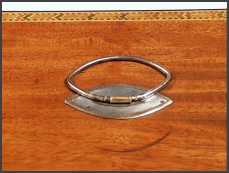 |
The centrally placed Sheffield plate handle has left a mark on the
mahogany. This is to be expected and is a sign that this is an original
18th C caddy |
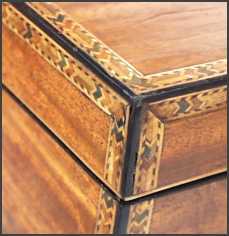 |
Close up detail of the fine multicoloured inlay bands which surround
this caddy |
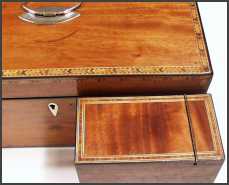 |
|
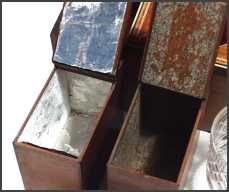 |
The lead lining of the canisters is nearly intact shows the sort of
deterioration which would be expected in an 18th C caddy. One has been
relined with tin foil in recent times. The original wood with remnants
of the 18th C lead is visible underneath.
A lead liner was used to maintain the moisture or humidity in the tea. |
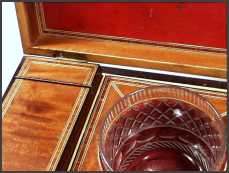 |
In this detail photograph of a inside corner of the body of the caddy
the quality of the work is clearly visible. The facings on the top are
in maple whereas the facings of the body are in dark ebony.
This is a feature in good early boxes. It adds interest when the caddy
is open and elegantly avoids the opening being over visible when the caddy
is closed |
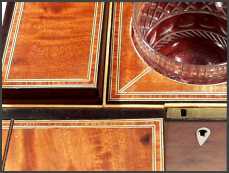 |
The wells for the canisters are lined with mahogany edged with maple
which has been rounded to a bead. |
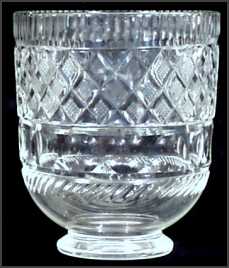 |
The bowl like the caddy is in the typical George III classical form.
This bowl is the original heavy hand blown cut crystal mixing bowl with
pontil mark.
A pontil mark is the slight scar on the bottom of the bowl left after
detaching it from the pontil. The pontil is an iron rod used in glass-making.
The presence of the pontil mark shows that it is hand blown glass. Some
people call it a punty mark. |
